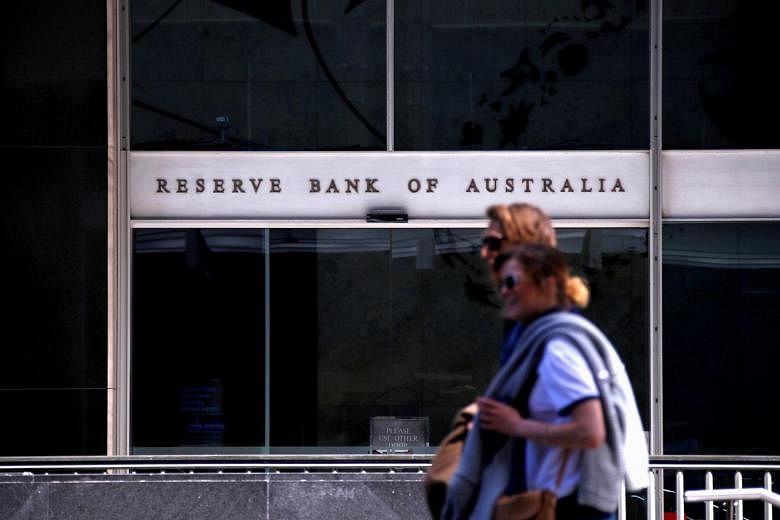SYDNEY (REUTERS) - Australia made a historic foray into quantitative easing on Thursday (March 19) and cut interest rates for the second time in a month, joining a rush by global central banks to pump cash into the economy as the coronavirus pandemic crushed businesses.
Following an out-of-schedule meeting, the Reserve Bank of Australia (RBA) reduced its cash rate to an all-time low of 0.25 per cent from 0.5 per cent and said the board would not tighten policy until it achieves its employment and inflation goals.
It also set a target for the yield on three-year Australian government bonds of around 0.25 per cent, which it plans to achieve by purchases in the secondary market beginning Friday.
The announcement helped push three-year yields to 0.34 per cent from 0.589 per cent before the RBA's decision, though they were still higher than the newly set target.
"We are clearly living in extraordinary and challenging times," RBA Governor Philip Lowe said in a speech, adding the situation was "just too fluid" for it to provide an updated set of economic forecasts.
"We are also expecting significant job losses. The scale of these losses will depend on the ability of businesses to keep workers on during this difficult period."
The RBA's stimulus follows an unprecedented step up in global co-ordination by central banks, governments and regulators since the start of this week to cushion the impact of the coronavirus.
The US Federal Reserve on Sunday slashed key rates by 100 basis points, boosted asset purchases and has flushed the system with liquidity. A number of other major central banks have since followed suit.
Australia's economy has had a near 30-year dream run without recession, thanks in part to rapid growth in Chinese demand for commodities and a housing market boom.
It was also able to emerge from the 2008-2009 global financial crisis relatively unscathed, allowing its central bank to spurn the new and unorthodox monetary policies adopted by many of its developed world peers during that period.
But the coronavirus now hangs heavy over the outlook with economists at major banks predicting the country would slide into recession in the first half of this year.
Australia has recorded around 600 coronavirus infections and six deaths and officials are growing increasingly concerned about the prospect of an exponential rise in cases.
In a sign of the growing problems, Australian flag carrier Qantas Airways on Thursday told most of its 30,000 employees to take leave and ceased international services.
INJECTIONS
The RBA said it would also provide a three-year funding facility for at least A$90 billion (S$74 billion) to the country's banks at a fixed rate of 0.25 per cent. Lenders will be able to obtain initial funding of up to 3 per cent of their existing outstanding credit.
The facility will be enhanced if banks boosted lending to businesses, especially to small- and medium-sized enterprises, the RBA added.
In a separate statement, the government said it would buy A$15 billion of residential mortgage-backed securities and other asset backed securities over the next 12 months.
This is on top of the A$17 billion of fiscal stimulus already announced.
Together with the RBA's lending package, that would pump about A$105 billion into the economy.
Lowe also called for more government stimulus, which was echoed by economists.
"The best response to Covid-19 remains a fiscal one, supported by liquidity measures," said Callam Pickering, APAC economist at global job site Indeed.
"Further rate cuts from the RBA are unlikely, although not impossible. There is also plenty of scope to expand upon the support offered to (banks) or to buy up longer-term government bonds."
Earlier, the RBA used its daily market operation to pump a record A$12.7 billion into the banking system, aiming to ease liquidity constraints in a stressed bond market.
The RBA's moves, however, did nothing to help the Australian dollar, which collapsed to US$0.5510, the lowest since late 2002, following the extended rout in global markets.

